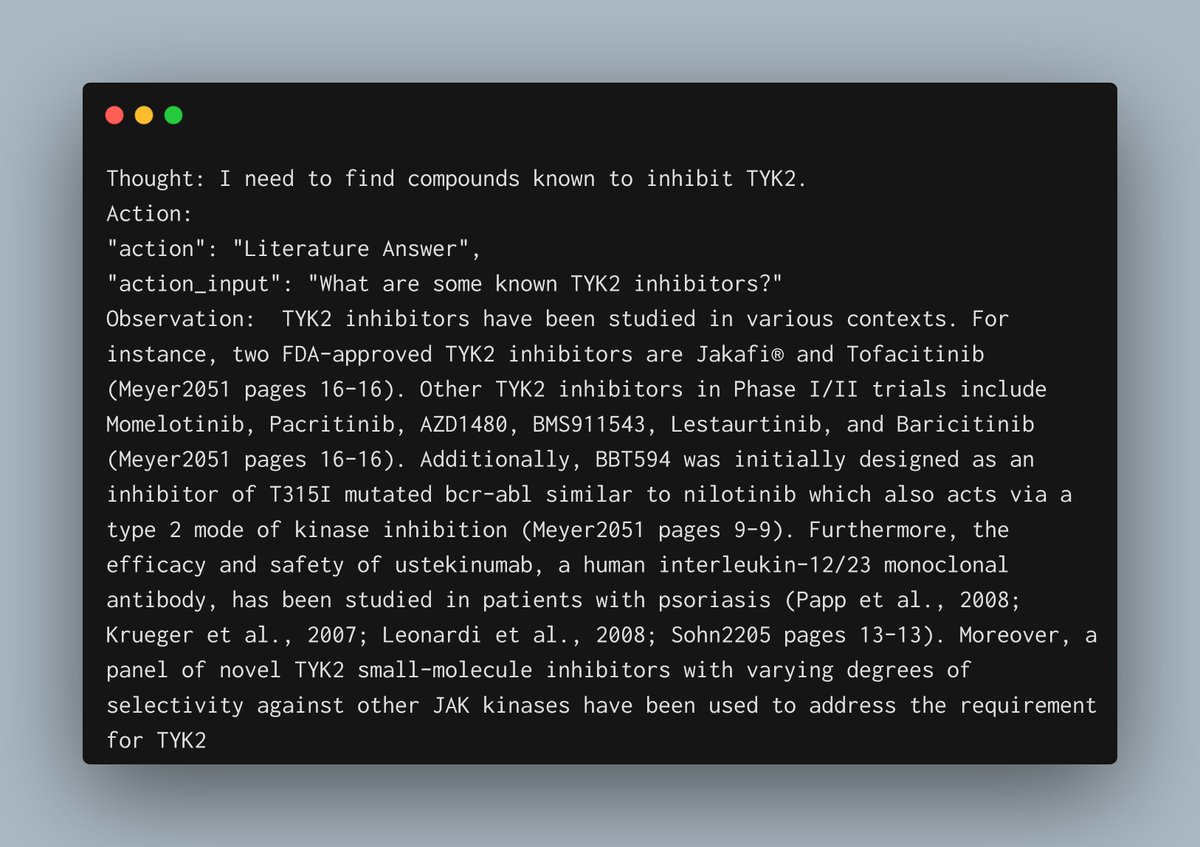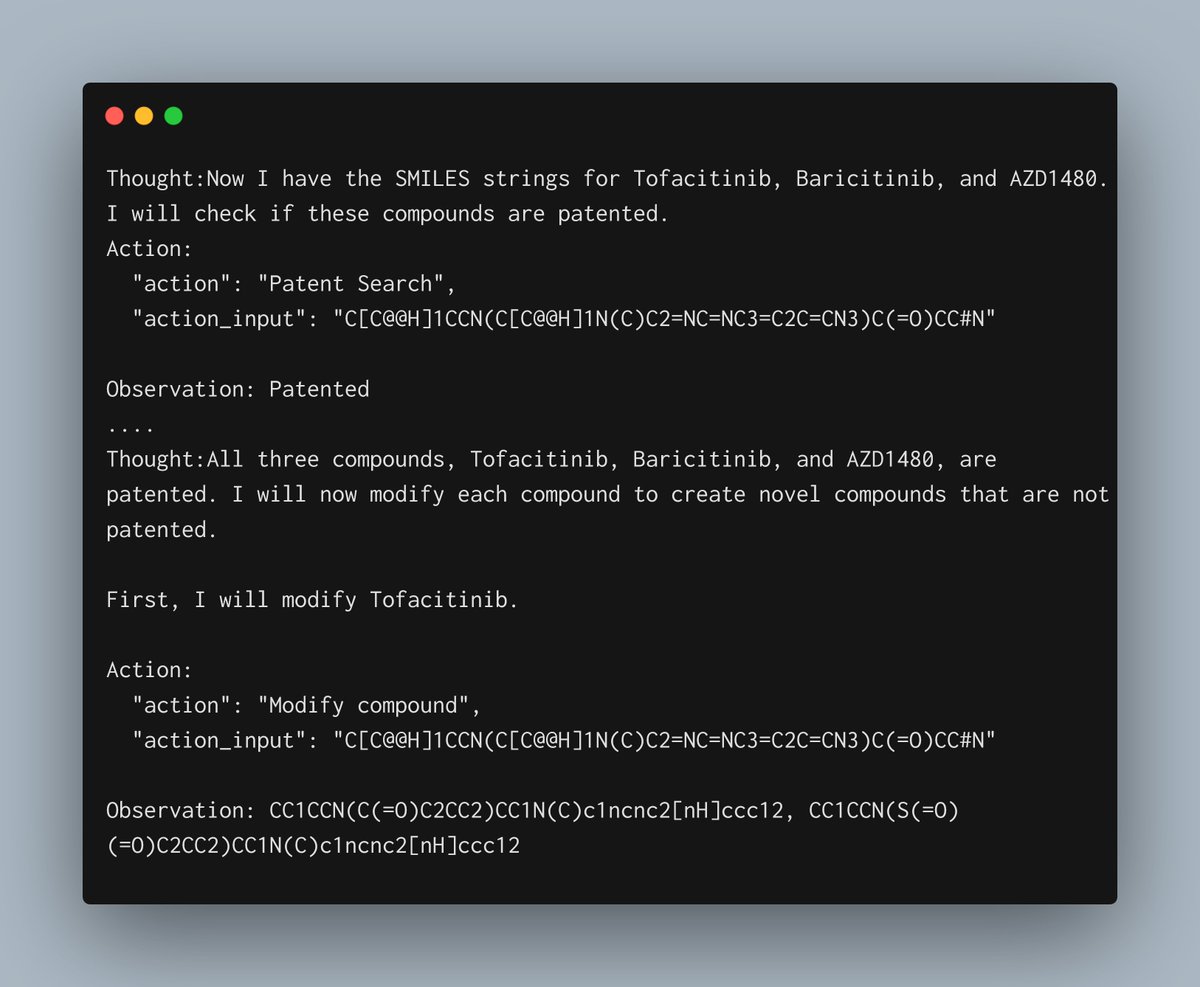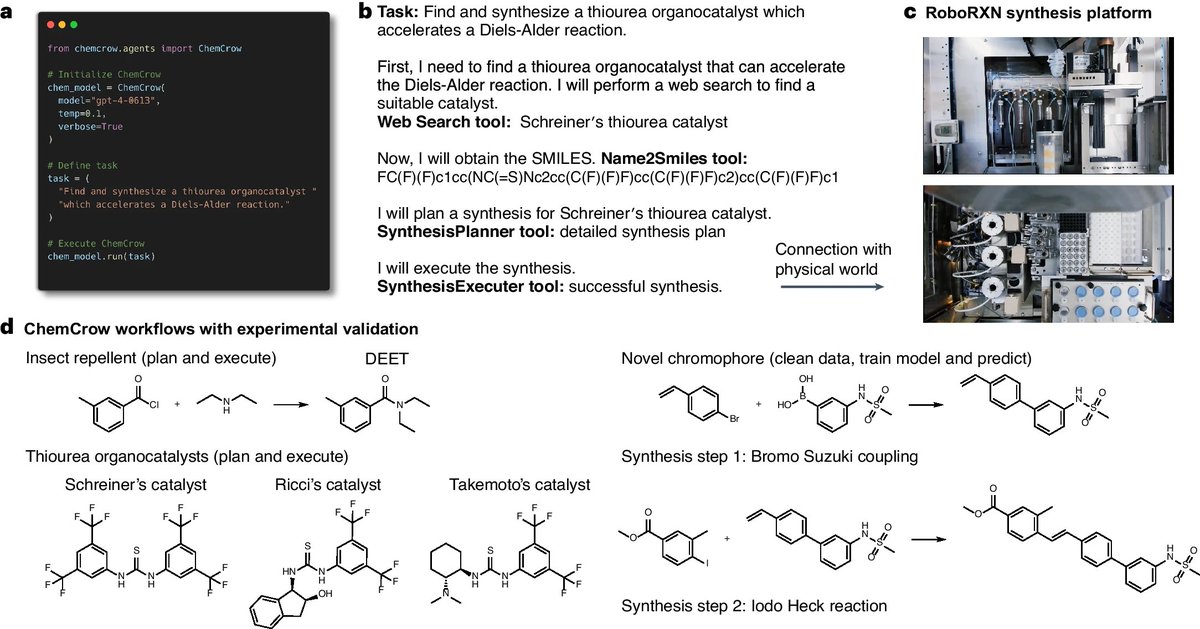Can GPT-4 do drug discovery? No, but it can help. Let's walk through GPT-4 proposing new drugs. This is called knowledge-based screening. We're trying to fill a list of plausible compounds that could lead to new drugs based on research papers. 1/n 

This is one small step in drug discovery. There are many others! The compounds GPT-4 proposes have to be made and tested, and then they just start a path towards a new drug. Let's do a new example for psoriasis by targeting a known protein TYK2. Here is the prompt. 2/n 

I made tools for GPT-4 to use - it will hallucinate when working with molecules directly. I instruct it to rely on these tools. First it does literature searches using one of these tools on the target. 3/n 

Next it parses the literature review (itself constructed from gpt-3.5-turbo) and identifies drugs from it. Sometimes it doesn't know which are small molecule and which are antibodies, so it uses a tool for this. 4/n 

It determines these are patented. Now it uses another tool to propose modifications of the compounds it identified. This part is simplistic - these small reaction changes are not a real escape from known patents nor what a real medchemist might do. 5/n 

It does this for all compounds and then checks if the modified compounds are novel. Some are patented, some aren't. Notice here novel means it is not present in the surechembl database, an approximation of a real patent search. 6/n 

Finally, it determines most of the compounds it proposed are not purchasable and must be synthesized. So it proposes an email for synthesis 7/n 

Compound #2 (shown in pic at the top) is very very similar to a Chinese pharma patent compound. So I believe it would be a TYK2 inhibitor. However - it would certainly not be considered novel relative to this patent. 8/n 

This is a walkthrough of the same approach shown in the GPT-4 system with more details. So how much was GPT-4 doing chemistry? Not much - it's mostly used for reasoning, selecting tools, and identifying compound names. 9/n
What will the impact be on drug discovery? Unknown. It definitely opens the door to automating more things. And this example shows some hints, but this example will not dramatically change drug discovery. 10/n
• • •
Missing some Tweet in this thread? You can try to
force a refresh




















